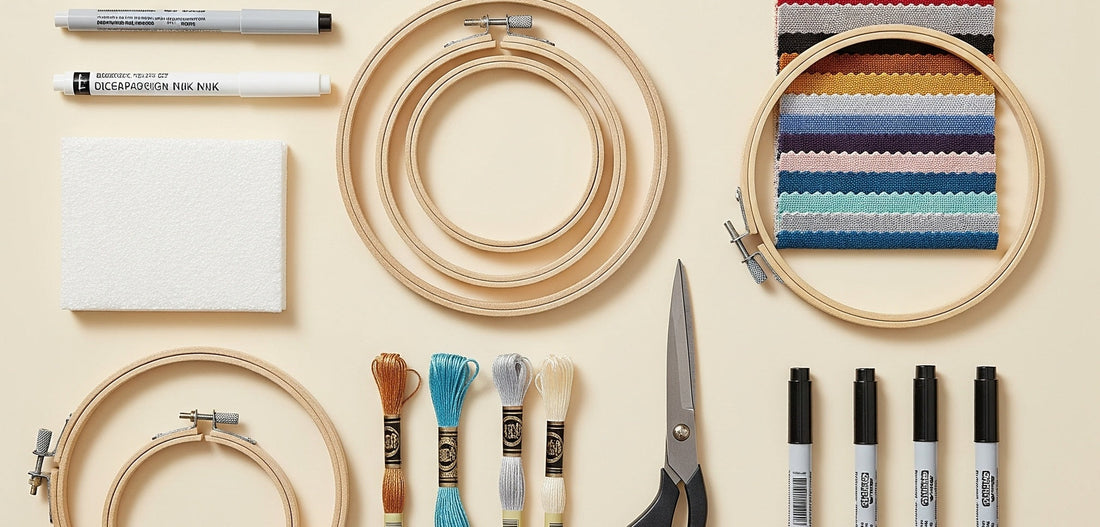
Essential Tools and Materials for Embroidery
Share
Everything Beginners Need to Start Stitching with Confidence
Embroidery is one of the most rewarding crafts to explore, and getting started is easier than it may seem. With just a few key tools and materials, you'll be ready to create beautiful hand or machine-stitched designs. This guide walks you through the must-haves for beginners.

1. Embroidery Needles
Not all needles are created equal! Embroidery needles have a slightly larger eye to accommodate thread and a sharp point (for standard fabrics) or a ballpoint tip (for knits).
Common types:
- Sharps: Great for cottons and linens.
- Crewel Needles: A standard choice for hand embroidery.
- Ballpoint Needles: Used on stretch fabrics.
- Machine Needles: Specific to brand and machine model; choose embroidery-specific versions for best results.
2. Threads
Thread choice affects the final texture and color vibrancy of your piece.
Popular types:
- Cotton Floss (DMC or Anchor): Soft, shiny, and divisible into 6 strands.
- Perle Cotton: Twisted and non-divisible; creates textured stitches.
- Rayon Thread: High sheen but slippery.
- Polyester or Embroidery Machine Thread: Strong, colorfast, and designed for speed.
Choose thread according to your project (delicate? decorative? durable?) and medium (hand vs. machine).

3. Fabric Choice
Your fabric is the canvas for your embroidery. The weave and weight impact how easy it is to stitch and how the final design looks.
Beginner-friendly fabrics:
- Cotton and Linen: Smooth, even weave.
- Aida Cloth: Great for counted cross-stitch.
- Twill or Denim: Sturdy for visible surface embroidery.
Always pre-wash and iron your fabric if it’s not pre-treated.
4. Embroidery Hoops
Hoops keep your fabric taut and your stitches even.
Types of hoops:
- Wooden Hoops: Lightweight and classic.
- Plastic Hoops: Often have a tightening lip; good grip.
- Snap Frames: Useful for larger projects.
For machine embroidery, you'll use your machine's built-in hoop system.

5. Scissors
Invest in a small, sharp pair of embroidery scissors to trim threads neatly.
Pro tip: Use one pair only for threads to avoid dull blades.
6. Stabilizers (Optional for Beginners)
If you’re using a machine or stitching on stretchy fabric, stabilizers help keep everything in place.
Types:
- Tear-away: Great for stable fabrics.
- Cut-away: Best for stretchy materials.
- Water-soluble: Used for lace or visible stabilizer areas.

7. Marking Tools
You'll need a way to transfer or draw your design onto fabric.
Options include:
- Water-soluble pens
- Air-erasable markers
- Iron-on transfer pens
- Carbon paper for embroidery
Always test marking tools on a fabric scrap first.
Final Thoughts
With these basic tools and materials, you're well-equipped to dive into the world of embroidery. Whether you're stitching initials on a tote or creating your own floral masterpiece, your tools will help bring your creativity to life.